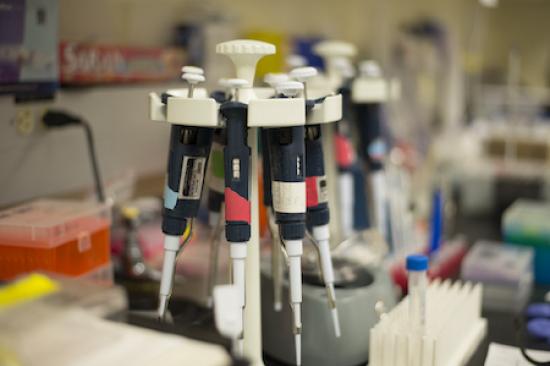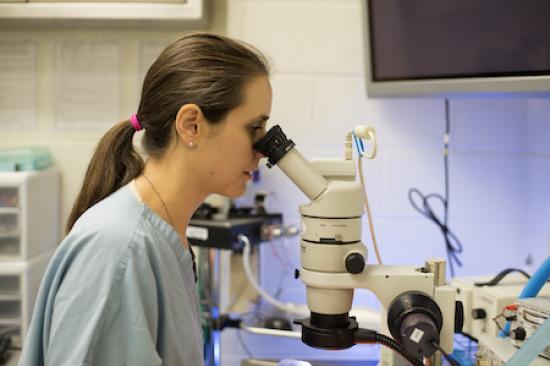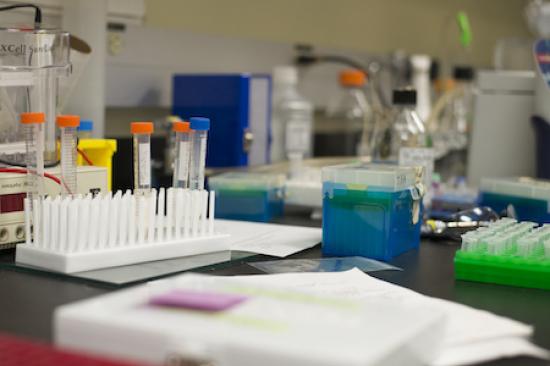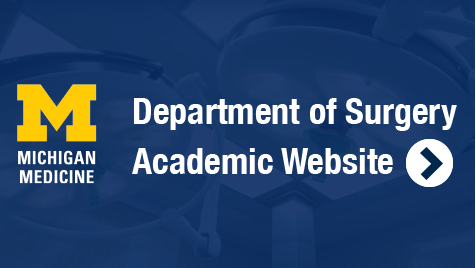The Obi Lab works at the nexus of immunity, epigenetics, thrombosis and infection. Using animal models and cell cultures, we employ a range of standard and advanced techniques to investigate particular proteins of interest, mRNA production and immunohistochemistry. Our studies aim to clarify the particular cells types — and the proteins they produce — involved in VT formation and clot resolution as well as the mechanisms underlying vein wall damage after thrombosis. Our work includes pinpointing how infection stimulates the lining of blood vessels to form thrombi. We investigate additional unanswered questions, including the mechanisms of subacute DVT and the processes of "immune memory," which we have shown is one of the ways in which infection predisposes patients to form future clots.



Obi Lab Overview
Strategies
Monocyte-Macrophage Plasticity & Epigenetic Modification
In close collaboration with Dr. Katherine Gallagher and Dr. Peter Henke, we're investigating the transition of monocytes to macrophages. When monocytes are exposed to substances produced by thrombi, particular proteins are activated, and these molecular switches change how the cells' genetic code is expressed, a process known as epigenetic regulation. This in turn changes immune cell function.
Understanding the triggers that make these cells likely to form a clot or break it down, and how that process affects the vein wall, is an important research question with tremendous clinical implications.
Immune-Cell Memory
Our work observing similar changes in immune cells that lead to clotting in the setting of both VT and infection (e.g. sepsis, pneumonia including H1N1 influenza and COVID-19) has led us to look at how these processes might be related. In particular, we are looking at immunological memory as a possible mechanism by which monocyte–macrophage plasticity is altered and increases the risk of VT following infection.
Subacute Models of DVT
If VT isn't treated quickly, the clot can turn into scar tissue and patients can be left with debilitating symptoms. But clearing the vessel to preserve limb function is challenging, and we have few good options to offer patients. The lack of an animal model of subacute DVT with which to speed research and identify new therapeutic approaches only heightens the challenge.
Recognized experts in large animal models of thrombosis, our team is developing a model that recapitulates human DVT. Having such a model is the first step toward better treatment and outcomes, and we believe subacute DVT represents a coming frontier in DVT care.
PAI-1 and Mechanisms of Scarring in VT
The enzyme PAI-1 is an important regulator of clot breakdown, but earlier work by our group has also suggested increased vein wall scarring when PAI-1 is altered. This is not entirely surprising since PAI-1 has many functions and binding sites, making it tricky to target specific domains.
The goal of our current work is to better understand how PAI-1 and its binding protein vitronectin recruit immune cells to a blood clot and impact clot resolution and vessel scarring. Answers to these questions will help us identify how we might manipulate PAI-1 so that it has a positive impact on both clot breakdown and vein wall integrity. In addition, we will test a new drug that selectively targets a domain of PAI-1 that affects clot breakdown.
Results
Our lab has identified particular epigenetic markers, or molecular switches, that are altered in immune cells by the clotting process. We observed these markers and changes at the level of the clot as well as, notably, in the bone marrow where the cells are produced. Our findings suggest that these cells are “reprogrammed” in the bone marrow, which might enable their immunological memory.
We have identified pneumonia and sepsis in critically ill patient populations as a major risk factor for development of DVT. Our research on VT and H1N1 flu infection in particular showed a high mortality rate associated with pulmonary embolism (PE). Related work also has identified a potentially new pharmacologic target for inhibition in the setting of sepsis, ICAM-1.
Our earlier work investigating immunological memory may help explain this elevated risk, even after recovery. We have found that following infection, the vessel endothelium changes the proteins expressed on the monocyte/macrophage surface and signals differently to circulating leukocytes.
Clinical Relevance & Impact
Clinical research conducted by investigators in our laboratory has changed how we practice in the clinic and helped fine-tune care. For example, we have validated the Caprini risk assessment tool for prophylactic anticoagulation in critically ill patients. Following our observation of the high mortality rate from PE in patients with H1N1 influenza infection, we implemented an empiric anticoagulation protocol that lowered the incidence of thrombosis and PE in this patient group and provided the rationale for some of the trials in COVID-19.
Using large-scale venous disease patient registries, we’ve found that use of direct oral anticoagulants (DOACs) to prevent future myocardial infarction in bypass patients is safer than use of older anticoagulants (vitamin K antagonists).
We’ve also found that patients over age 65 have outcomes equally as good as younger patients after varicose vein surgery, a finding that has positively impacted reimbursement policies. And, using a large, statewide registry, we investigated the impact of blood transfusion among vascular surgery patients and found that transfusion was related to death, heart attack and pneumonia. But when blood was administered during, rather than after, the procedure, patients suffered few negative effects. The findings have changed our practice, and we now in our practice transfuse at the time of bleeding.
Future Directions
We are excited to continue our investigations of upstream and downstream regulators of monocyte-macrophage plasticity and to further explore particular signaling pathways of interest. We are also eager to test a new compound that targets the active domain of PAI-1 in an animal model of VT.
Collaborations
Our laboratory works closely with many collaborators throughout the U-M Medical School, including:
- Dr. Peter Henke and Dr. Katherine Gallagher on immune cell plasticity, molecular switching and the epigenetics of VT.
- Dr. Daniel Myers on animal models of DVT.
- Bethany Moore, PhD on the immune-based mechanisms of VT.
- Dr. Thomas Sisson and Daniel Lawrence, PhD, on targeting PAI-1 in animal models of VT.
Funding
- American Venous Forum Jobst Award: Modulation of post-thrombotic vein wall fibrosis via selective inhibition of vitronectin-cellular inhibitions.
- Vascular and Endovascular Surgery Society Early Career Faculty Research Award: Epigenetic influence on macrophage phenotypes and development of post thrombotic vein wall fibrosis
- Wylie Vascular Cures Scholar Award: Impact of bone marrow progenitor cells epigenetic memory on venous thrombosis formation and resolution
- NIH NHLBI: Myeloid TLR4 epigenetic regulation and signaling in accelerating venous thrombus resolution
- Lefkofsky Family Foundation: The impact of monocyte/macrophage phenotype and epigenetic memory in SARS-CoV2-associated immunothrombosis


